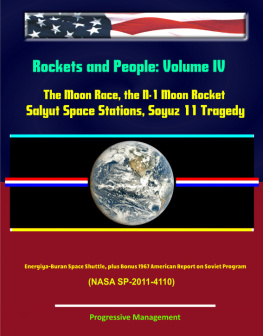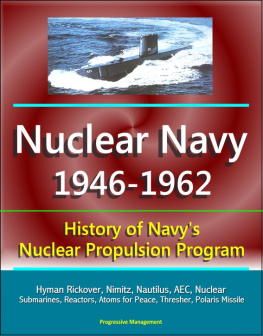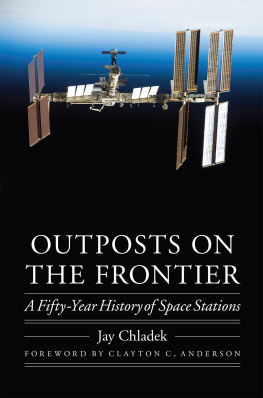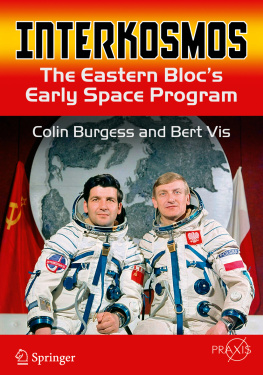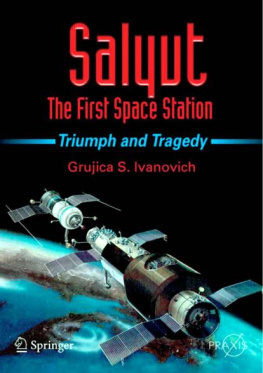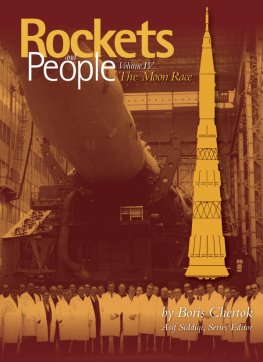Rockets and People: Volume IV: The Moon Race,the N-1 Moon Rocket, Salyut Space Stations, Soyuz 11 Tragedy,Energiya-Buran Space Shuttle, plus Bonus 1967 American Report onSoviet Program (NASA SP-2011-4110)
National Aeronautics and Space Administration(NASA), World Spaceflight News, Boris Chertok, Asif A. Siddiqi
Smashwords Edition
Copyright 2012 Progressive Management
Questions? Suggestions? Comments? Concerns?Please contact the publisher directly at
Remember, the book retailer can't answer yourquestions, but we can!
* * * * * * * * * * *
Smashwords Edition, License Notes
This ebook is licensed for your personalenjoyment only. This ebook may not be re-sold or given away toother people. If you would like to share this book with anotherperson, please purchase an additional copy for each person youshare it with. If you're reading this book and did not purchase it,or it was not purchased for your use only, then you should returnto Smashwords.com and purchase your own copy. Thank you forrespecting the hard work of this author.
* * * * * * * * * * *
This is a privately authored news service andeducational publication of Progressive Management. Our publicationssynthesize official government information with original material -they are not produced by the federal government. They are designedto provide a convenient user-friendly reference work to uniformlypresent authoritative knowledge that can be rapidly read, reviewedor searched. Vast archives of important data that might otherwiseremain inaccessible are available for instant review no matterwhere you are. This e-book format makes a great reference work andeducational tool. There is no other reference book that is asconvenient, comprehensive, thoroughly researched, and portable -everything you need to know, from renowned experts you trust. Forover a quarter of a century, our news, educational, technical,scientific, and medical publications have made unique and valuablereferences accessible to all people. Our e-books put knowledge atyour fingertips, and an expert in your pocket!

Rockets and People: Volume IV: The Moon Race,the N-1 Moon Rocket, Salyut Space Stations, Soyuz 11 Tragedy,Energiya-Buran Space Shuttle, plus Bonus 1967 American Report onSoviet Program
Boris Chertok
Asif Siddiqi, Series Editor
The NASA History Series
National Aeronautics and SpaceAdministration
Office of Communications * History ProgramOffice * Washington, DC
NASA SP-2011-4110
* * * * * * * * * * * *
I dedicate this book to the cherished memoryof my wife and friend, Yekaterina Semyonova Golubkina.
* * * * * * * * * * * *
Contents
* * * * * * * * * * * *
* * * * * * * * * * * *
Series Introduction
In an extraordinary century, AcademicianBoris Yevseyevich Chertok has lived an extraordinary life. He haswitnessed and participated in many important technologicalmilestones of the 20th century, and in these volumes, he recollectsthem with clarity, humanity, and humility. Chertok began his careeras an electrician in 1930 at an aviation factory near Moscow.Thirty years later, he was one of the senior designers in charge ofthe Soviet Union's crowning achievement as a space power: thelaunch of Yuriy Gagarin, the world's first space voyager. Chertok's60-year-long career, punctuated by the extraordinaryaccomplishments of both Sputnik and Gagarin, and continuing to themany successes and failures of the Soviet space program,constitutes the core of his memoirs, Rockets and People. In thesefour volumes, Academician Chertok not only describes and remembers,but also elicits and extracts profound insights from an epic storyabout a society's quest to explore the cosmos.
Academician Chertok's memoirs, forged fromexperience in the Cold War, provide a compelling perspective into apast that is indispensable to understanding the presentrelationship between the American and Russian space programs. Fromthe end of World War II to the present day, the missile and spaceefforts of the United States and the Soviet Union (and now Russia)have been inextricably linked. As such, although Chertok's workfocuses exclusively on Soviet programs to explore space, it alsoprompts us to reconsider the entire history of spaceflight, bothRussian and American.
Chertok's narrative underlines how, from thebeginning of the Cold War, the rocketry projects of the two nationsevolved in independent but parallel paths. Chertok's first-handrecollections of the extraordinary Soviet efforts to collect,catalog, and reproduce German rocket technology after World War IIprovide a parallel view to what historian John Gimbel has calledthe Western "exploitation and plunder" of German technology afterthe war.1 Chertok describes how the Soviet design team under thefamous Chief Designer Sergey Pavlovich Korolev quickly outgrewGerman missile technology. By the late 1950s, his team produced themajestic R-7, the world's first intercontinental ballistic missile.Using this rocket, the Soviet Union launched the first Sputniksatellite on 4 October 1957 from a launch site in remote centralAsia.
The early Soviet accomplishments in spaceexploration, particularly the launch of Sputnik in 1957 and theremarkable flight of Yuriy Gagarin in 1961, were benchmarks of theCold War. Spurred by the Soviet successes, the United States formeda governmental agency, the National Aeronautics and SpaceAdministration (NASA), to conduct civilian space exploration. As aresult of Gagarin's triumphant flight, in 1961, the Kennedyadministration charged NASA to achieve the goal of "landing a manon the Moon and returning him safely to the Earth before the end ofthe decade."2 Such an achievement would demonstrate Americansupremacy in the arena of spaceflight at a time when both Americanand Soviet politicians believed that victory in space would betantamount to preeminence on the global stage. The space programsof both countries grew in leaps and bounds in the 1960s, but theAmericans crossed the finish line first when Apollo astronauts NeilA. Armstrong and Edwin E. "Buzz" Aldrin, Jr., disembarked on theMoon's surface in July 1969.
Shadowing Apollo's success was an absentquestion: What happened to the Soviets who had succeeded sobrilliantly with Sputnik and Gagarin? Unknown to most, the Sovietstried and failed to reach the Moon in a secret program that came tonaught. As a result of that disastrous failure, the Soviet Unionpursued a gradual and consistent space station program in the 1970sand 1980s that eventually led to the Mir space station. TheAmericans developed a reusable space transportation system known asthe Space Shuttle. Despite their seemingly separate paths, thespace programs of the two powers remained dependent on each otherfor rationale and direction. When the Soviet Union disintegrated in1991, cooperation replaced competition as the two countriesembarked on a joint program to establish the first permanent humanhabitation in space through the International Space Station(ISS).
Academician Chertok's reminiscences areparticularly important because he played key roles in almost everymajor milestone of the Soviet missile and space programs, from thebeginning of World War II to the dissolution of the Soviet Union in1991. During the war, he served on the team that developed theSoviet Union's first rocket-powered airplane, the BI. In theimmediate aftermath of the war, Chertok, then in his early 30s,played a key role in studying and collecting captured German rockettechnology. In the latter days of the Stalinist era, he worked todevelop long-range missiles as deputy chief engineer of the mainresearch institute, the NII-88 (pronounced "nee-88") near Moscow.In 1956, Korolev's famous OKB-1 design bureau spun off from theinstitute and assumed a leading position in the emerging Sovietspace program. As a deputy chief designer at OKB-1, Chertokcontinued with his contributions to the most important Soviet spaceprojects of the day: the Vostok; the Voskhod; the Soyuz; theworld's first space station, Salyut; the Energiya superbooster; andthe Buran space shuttle.
Next page
